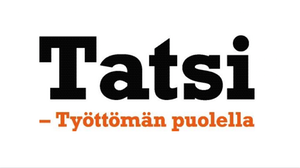Possible article by a professional:
NAFTA Agreement Replacement: Understanding the USMCA and Its Impacts
The North American Free Trade Agreement (NAFTA), which came into effect in 1994, created a trilateral trade bloc between the United States, Canada, and Mexico, and promoted the trade of goods and services among them with reduced tariffs and other barriers. However, after years of the criticism of its flaws and outdated provisions, the leaders of the three countries negotiated a new agreement that modernizes and revises NAFTA. On November 30, 2018, they signed the United States-Mexico-Canada Agreement (USMCA), which awaits ratification by their respective legislatures. This article will provide an overview of the USMCA and its potential impacts on various industries and issues, as well as some SEO tips for writing about it.
What is the USMCA?
The USMCA aims to strengthen economic ties between the three countries and address some of the concerns raised by NAFTA`s critics, such as labor rights, intellectual property, digital trade, and dispute settlement. Some of the key changes in the USMCA include:
– Increased regional content requirements and labor standards for the automotive industry, which is seen as a win for the United States and its workers who have been affected by the outsourcing of jobs to Mexico.
– New rules for the dairy sector that give the United States more access to the Canadian market and limit Canada`s ability to export certain dairy products to Mexico.
– Stronger protections for intellectual property rights, including biologics, patents, and trademarks, which benefit the U.S. pharmaceutical and tech industries.
– Provisions for e-commerce and data localization that ensure cross-border data flows, prohibit customs duties on digital products, and prevent governments from requiring companies to store and process data within their borders.
– A new chapter on labor that requires Mexico to enforce its labor laws more vigorously, prevent the use of forced labor, and establish independent labor panels to resolve disputes regarding collective bargaining and contracts.
The USMCA also retains many of the core elements of NAFTA, such as the elimination of most tariffs on trade among the three countries and the protection of investor-state dispute settlement mechanisms. However, it does make some changes that may affect certain sectors differently.
What are the impacts of the USMCA?
The impacts of the USMCA on various industries and issues are still uncertain, as the agreement needs to be implemented and tested over time. However, based on the initial reactions and analyses of experts and stakeholders, some potential impacts are:
– Automotive industry: The USMCA`s new rules of origin for cars and trucks could make it harder for Mexican producers to export vehicles to the United States and could raise the costs of vehicles for consumers. However, it could also encourage more investment in the North American region and create more jobs in the United States.
– Dairy industry: The USMCA`s concessions to the U.S. dairy industry could hurt Canadian farmers who may face more competition and may receive less support from their government. However, it could also benefit American farmers and processors who can now export more dairy products to Canada.
– Intellectual property: The USMCA`s stronger protections for intellectual property could benefit U.S. companies that rely on patents and trademarks to protect their innovations and products. However, it could also limit other countries` access to affordable medicines and technologies that are still under patent protection.
– Digital trade: The USMCA`s provisions for e-commerce and data could benefit the tech industry and facilitate cross-border business. However, it could also raise privacy and security concerns, especially if governments cannot regulate data flows and protect their citizens` rights.
– Labor: The USMCA`s new labor chapter could benefit Mexican workers who can now have more rights and protections, and could reduce the incentive for companies to outsource jobs to Mexico based on low wages. However, it could also increase the compliance costs for Mexican businesses and limit their competitiveness.
How to write about the USMCA?
If you want to write about the USMCA from an SEO perspective, here are some tips to consider:
– Use relevant and specific keywords that reflect the main topics and impacts of the USMCA, such as ”NAFTA replacement”, ”USMCA rules of origin”, ”USMCA labor standards”, ”USMCA dairy access”, etc.
– Optimize your headlines and meta descriptions to capture the attention of your target audience and provide a clear summary of your article`s main points and benefits.
– Include relevant and credible sources that can support your arguments and provide additional information and perspectives on the USMCA. Some examples of sources could be governmental reports, industry associations, academic studies, and expert interviews.
– Use visuals such as charts, graphs, and infographics to illustrate complex data and make your content more engaging and shareable.
– Provide actionable insights and recommendations that can help your readers understand the implications of the USMCA for their businesses, careers, or interests. Some examples of insights could be ”How to prepare for the USMCA`s new rules for autos” or ”What are the potential opportunities and challenges of the USMCA for the tech industry”.
In conclusion, the USMCA is a significant development in North American trade that has raised hopes and concerns among various stakeholders. As a professional, you can help your clients and readers understand the USMCA and its impacts by using relevant keywords, sources, visuals, and insights that can make your content more visible, credible, and actionable.








Viimeisimmät kommentit